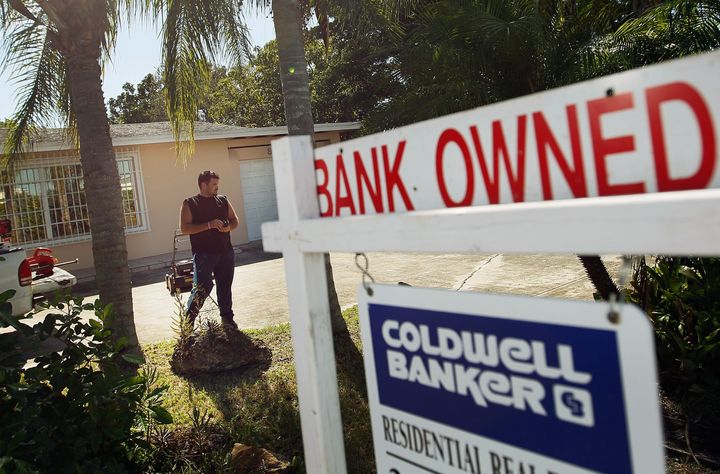
You hardly hear anyone in the media -- not to mention any of the presidential candidates -- talking about it, but the foreclosure crisis isn't even halfway over with. And a good portion of what you may have heard or read about it is wrong.
Those are the disturbing conclusions of a report from the Center for Responsible Lending that got far too little attention when it was released in November. It's worth looking at as we celebrate the birthday of Dr. Martin Luther King Jr., who recognized that legal equality doesn't mean much if it isn't linked to economic opportunity. CRL's report, "Lost Ground, 2011," paints a picture of devastation that has disproportionately affected America's Asian American, Latino and African American communities.
Combining data reported to the federal government under the Home Mortgage Disclosure Act with information from two private databases that cover details not collected by the feds, CRL found that, as of early last year, 2.7 million households had already lost their homes to foreclosure. Worse, 3.6 million more were at serious risk, either in some stage of the foreclosure process or 60 or more days delinquent. And while the data used in the report are nearly a year old, indications are that the landscape hasn't changed much.
There has been much nonsense said and written in the media claiming that loans to supposedly unworthy borrowers -- people who, in Rush Limbaugh's words, "had no business having money lent to them" -- were the cause of the crisis. But CRL's data reveal something quite different: The problem wasn't so much who got loans as what kind of loans they received.
Specifically, loans with risky features such as interest-only payments, negative amortization (meaning that even if the borrower makes all their payments as scheduled, the total loan balance actually goes up), prepayment penalties or interest rates that reset in less than five years had foreclosure rates three to four times that of conventional loans. Loans originating from mortgage brokers also had disproportionately high foreclosure and delinquency rates.
Ah, but weren't those tricky loans created to accommodate borrowers who couldn't qualify for conventional loans? Actually, CRL found that "as many as 61 percent of borrowers who received subprime loans had credit scores that would have enabled them to qualify for a prime loan."
A major reason that nonwhite borrowers have had higher foreclosure rates than whites is that they were far more likely to receive these trick loans. And it wasn't because they had bad credit. Among borrowers with rock-solid credit, FICO scores of 660 or above, African Americans were 30 percent more likely to get the high-risk loans known as hybrid or option ARMs, Asian Americans were 70 percent more likely, and Latinos were 80 percent more likely to get one of these risky loan products.
And it wasn't necessarily low income borrowers getting these dubious mortgages. In areas experiencing rapid growth in home prices, borrowers with incomes 20 percent or more above the area median were actually more than twice as likely as lower-income borrowers to receive a hybrid or option ARM.
The report also debunks the thoroughly discredited but still oft-repeated claim that the federal Community Reinvestment Act caused the subprime meltdown. In fact, loans made by banks fulfilling their CRA obligations outperformed non-CRA loans, many of which originated outside the regulated banking system.
What emerged during the housing bubble was what CRL calls a "dual mortgage market," in which "lower-income and minority borrowers and communities were served primarily by mortgage brokers and independent mortgage companies operating largely outside of existing consumer protections. These lenders had financial incentives to steer large numbers of borrowers into riskier mortgage products without regard for their ability to pay."
The result has derailed progress toward Dr. King's dream of equal opportunity -- economic as well as legal and social -- for all. As the report notes, there are plenty of neighborhoods where at least one in five homes has been foreclosed, shredding the fabric of community and devastating the tax base on which local services depend. This debacle has surely contributed to the alarming growth in the racial wealth gap, to the point where the median Latino household owns about six percent of the wealth of a white family, and median African American family has about five percent.
One thing is clear: A return to the bad old days of redlining -- simply denying credit to whole groups of Americans on the basis of their income or skin color -- is not the route to stability in the housing market or the rest of our economy. Instead, it will take a conscious effort to match sane and sustainable loans to the real-world situations of borrowers looking to own a home as a practical step toward building wealth. And, though anti-government zealots won't want to hear it, it will take sensible, tough regulation to prevent abuses.
What's less clear is whether any of our present or would-be leaders is truly ready to lead on this critical issue.